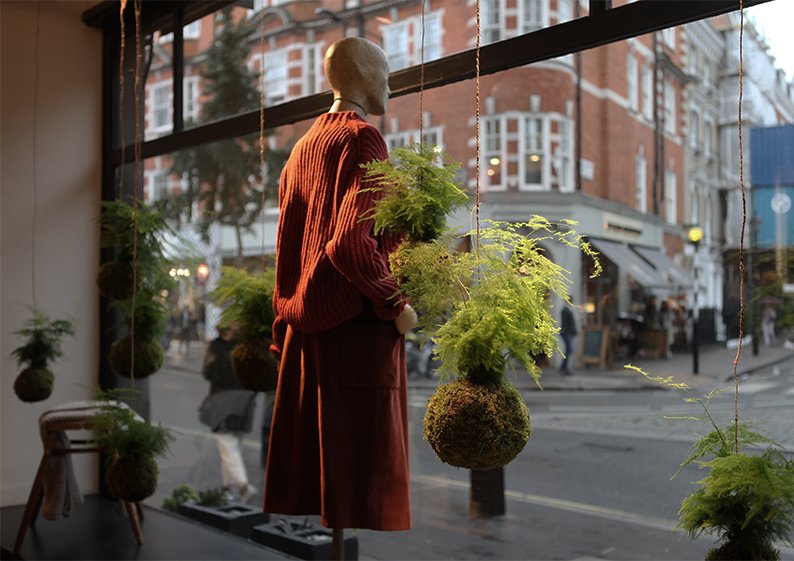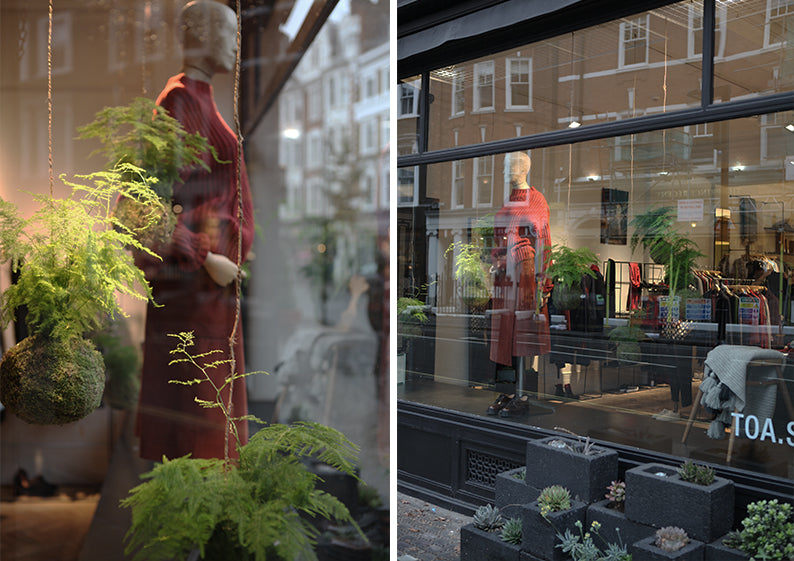


This month the TOAST shop windows are filled with kokedama. Our regular nature writer,Matt Collins, introducesthese beautiful Japanese moss balls...
For a few short days at the end of January each year, the Chelsea Physic Garden in London opens its gates to exhibit a vast catalogue of snowdrops in flower. Not only are the varieties comprehensive in number, but the garden team find endlessly creative ways with which to display them. Sprays of brilliant white petals spring from clumps in the long borders while delicate, green-fringed species sit in clear glass beakers, lifted above the ground on rustic metal stakes. Some years temporary troughs are filled with soil soaked in food colouring, resulting in exotic hues translocated into the petals of planted snowdrops. But for me it was last year's snowdrops, suspended in the air, that made the most striking exhibit.
Hanging from the winter branches of the garden's mature trees, radiant little flowers protruded from balls of damp moss, glinting motionlessly like candles in a quiet church. This was my first introduction to kokedama': the Japanese art of displaying living plants in a free standing medium of soil, wrapped in moss. Thought to have originated during the artistic ingenuity of 17th century Edo-period Japan, kokedama has found popularity among gardeners and interior designers alike. Plainly put, koke-dama' translates to moss-ball': the simplicity and earthiness of such an object being very much in line with the cultural identity of that particular period. In terms of horticultural exhibition, it's another great way of bringing nature indoors; similar, in a sense, to Edwardian glass display cases in their offering of a self-contained little organic world. Plants are accommodated with the basic essentials for sustained (although rarely long-lasting) growth, their roots encased as thoroughly as in a pot, kept damp by the moss and held in place with twine. Provided that the soil medium is fairly loamy and moisture retentive (bonsai or container-plant soil will do the job), constructing a kokedama display is pretty straightforward.
The more interesting, if slightly trickier bit however, is selecting what to grow inside the globes. Although kokedama plantings will require a good level of natural light to thrive, the external moss tends to brown under extended sunlight. They do best where the light is bright yet filtered; set away, for example, from the glare of south facing windows. Therefore the display location somewhat dictates what may be planted, the ideal candidates being fairly shade and drought tolerant plants. While traditional Japanese kokedama would often exhibit impressively formed bonsai trees, popular modern alternatives include orchids, ivy and ornate ferns such as maidenhair and asplenium. The moss balls dressing the TOASTshop windows feature an array of asparagus ferns a particularly feathery variety that grows happily indoors. They're an unostentatious and suitably modest choice; fitting of the transient simplicity of their Japanese heritage.
Words by Matt Collins
Shop the TOAST Chunky Fisherman Rib Sweater and Cord Wrap Skirtfeatured, and the full WinterCollection here.

Add a comment